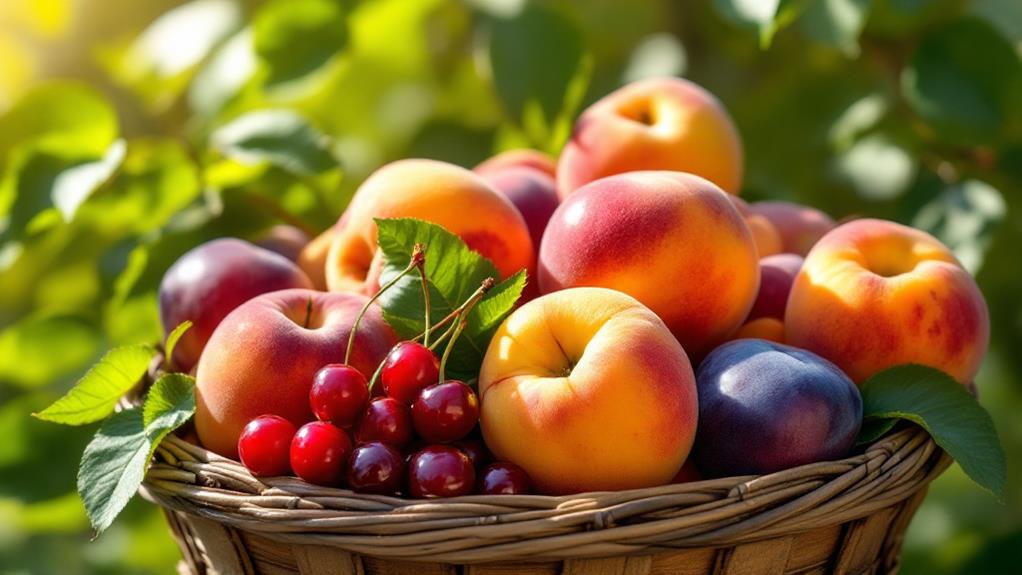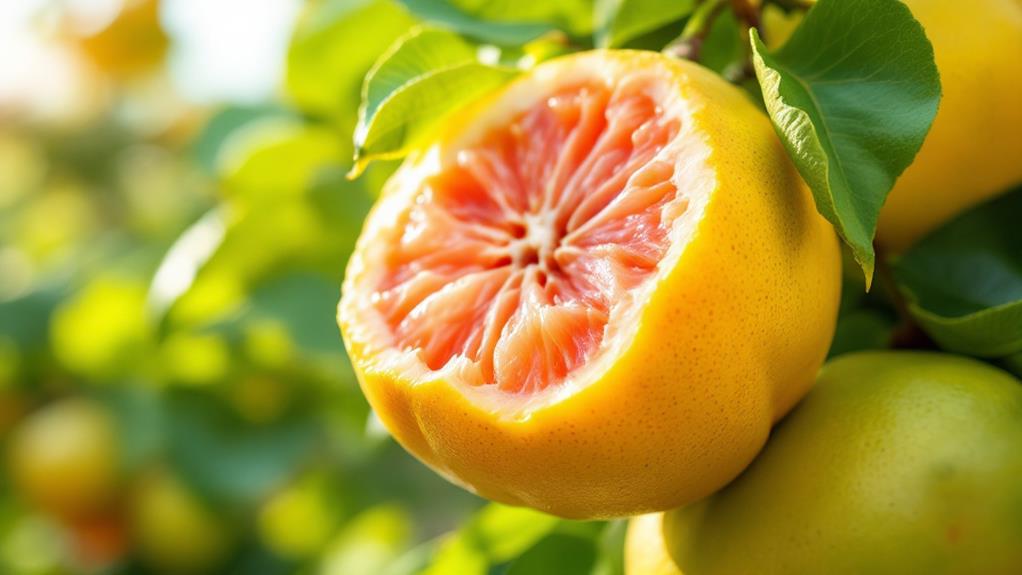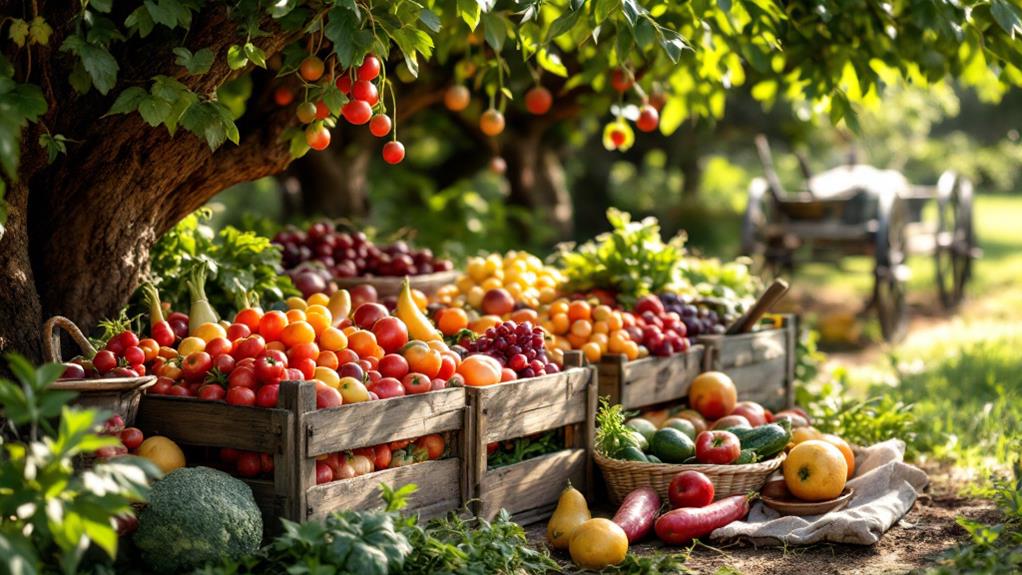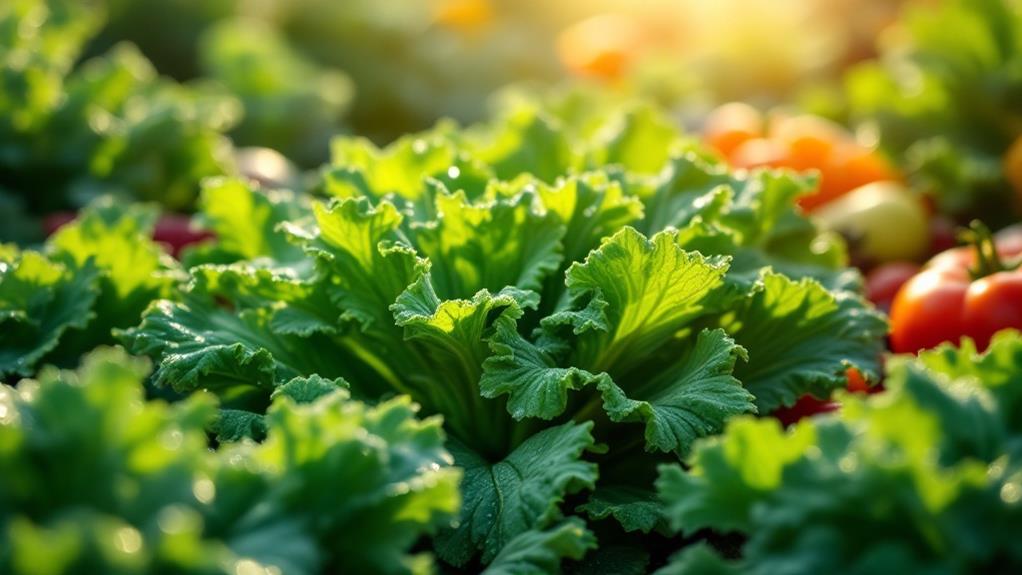The Ultimate Guide for Growing Langsat: Tips for Cultivating This Tropical Fruit
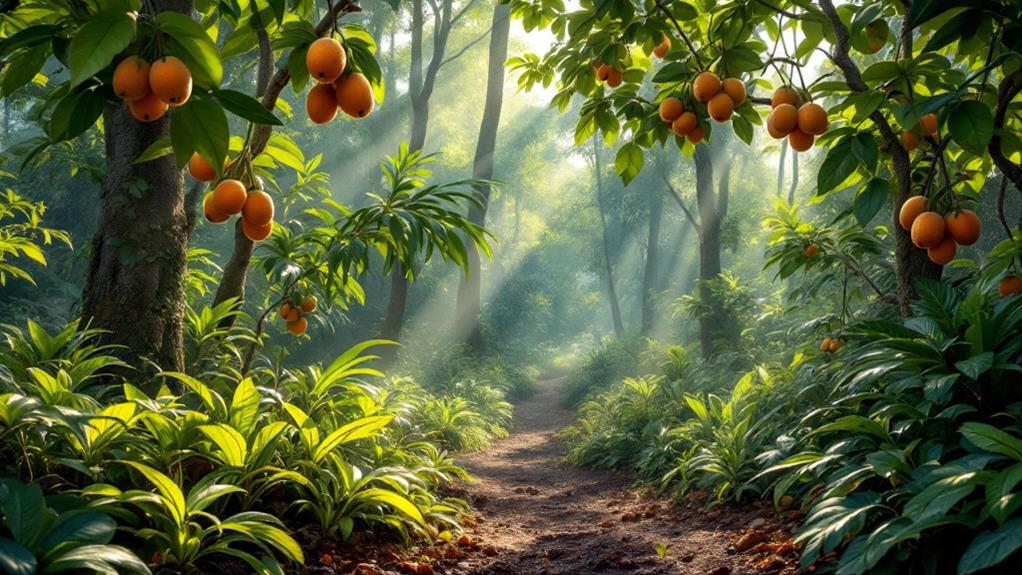
To grow langsat successfully, start by ensuring it thrives in a humid climate akin to Southeast Asia. Provide full sun and plant it in well-drained, fertile soil with a pH of 5.5 to 7.0. You can propagate langsat using seeds, air layering, or grafting—each having its unique method. Regular watering, aside from dry spells, and fertilizing every 4-6 weeks with a balanced NPK mix are essential. Pruning and mulching help maintain tree health and promote growth. Be mindful of pests like aphids and diseases like root rot. With continued exploration, you'll master the nuances of langsat cultivation.
Langsat Plant Basics
In relation to cultivating the langsat plant, understanding its basic requirements is vital. You'll want to make certain that your langsat tree grows in a humid climate, much like those found in Southeast Asia. These trees thrive when provided with full sun exposure, which is significant for ideal growth and fruit production. Plant your langsat in well-drained, fertile soil with a pH between 5.5 and 7.0 to give it the best start.
Langsat trees typically reach heights of 30-40 feet, and their glossy, lanceolate leaves are a signature feature. As you nurture your tree, be vigilant about potential diseases that could affect its health. Regularly inspect the leaves and fruits for any signs of disease, as early detection can be key in preventing serious damage.
When it comes to fruiting, patience is necessary. Mature langsat trees will bear fruit 4-6 months after flowering, and you'll know they're ready for harvest when the fruits turn a golden yellow and feel slightly soft to the touch. Besides their delicious taste, these fruits are packed with vitamins A, B, C, and antioxidants, making them a nutritious enhancement to your diet.
Effective Propagation Techniques
When you're ready to propagate your langsat plant, you'll find several effective techniques at your disposal, each with its unique benefits and considerations. You can choose from seed propagation, air layering, and grafting. Each method varies in success rates and the time it takes for the plant to bear fruit.
For seed propagation, start by selecting ripe, healthy langsat fruits. Clean the seeds well, soak them in water for 24 hours, and plant them in a well-draining potting mix. Remember, consistent moisture and indirect sunlight are vital for successful germination. Quick insights on disease prevention indicate that starting with disease-free seeds is fundamental to avoid future problems.
Air layering involves making a cut on a branch, applying rooting hormone, and wrapping it with moist sphagnum moss. Cover it with plastic until roots develop. This method can bypass some soil-borne diseases, ensuring a healthier start for your plant.
Grafting is another effective option, where you join a scion from a desired variety onto a compatible rootstock. This can lead to faster fruit production and allows you to select disease-resistant varieties, further safeguarding your langsat's health. Choose the method that best suits your gardening goals.
Seed Germination Steps
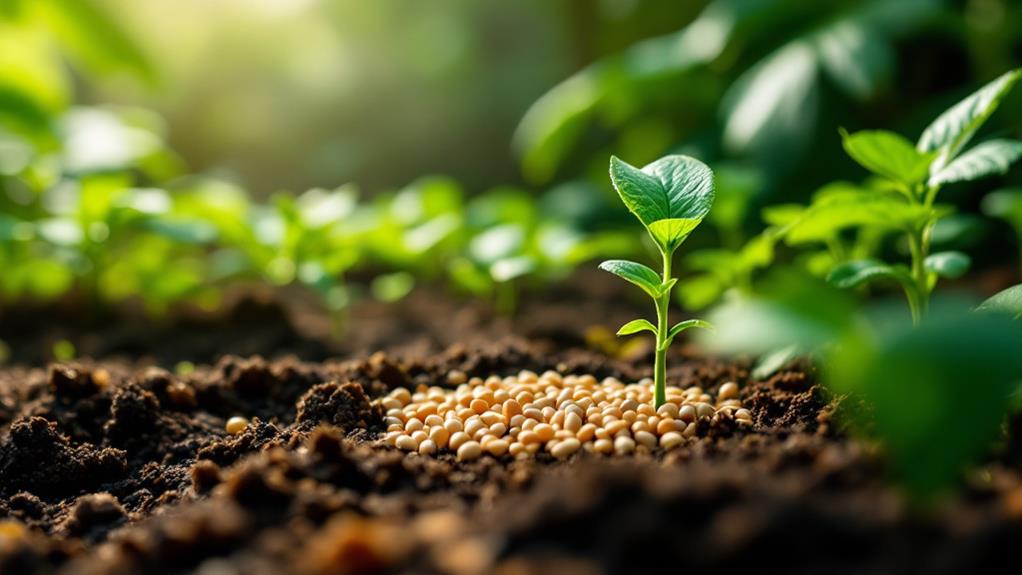
To successfully germinate langsat seeds, start by selecting ripe and healthy fruits to extract the seeds, ensuring they're free from any pulp or contaminants. This careful selection increases your chances of germination success. Once you've cleaned the seeds, soak them in water for 24 hours. This soaking process improves their germination potential, priming them for the next stage.
Plant the prepped seeds in a well-draining potting mix, burying them about 1-2 inches deep. Consistent soil moisture is essential, so keep the soil damp but not waterlogged. Position the seeds where they'll receive indirect sunlight, as this environment mimics their natural habitat and aids in sprouting. Expect to see the initial signs of life around three weeks after planting.
While waiting, patience is key. The germination rate can be low, and not all seeds may sprout. For storage, place any extra cleaned seeds in damp paper towels inside a waterproof, airtight container. Keep them at temperatures above 80°F (27°C) to maintain viability. With persistence, you'll soon have your own langsat seedlings—an opportunity for an instant plant ID as they mature and grow.
Essential Care Practices
Now that you've successfully germinated your langsat seeds, it's time to focus on nurturing your young plants with proper care practices to guarantee healthy growth and abundant fruit production. Gaining quick insights into fundamental care will guarantee your langsat trees thrive. Start by confirming regular watering, especially during dry periods. Langsat trees need consistent moisture to support their growth and fruiting, so keep the soil evenly moist but not waterlogged.
Fertilizing your langsat trees every 4-6 weeks during the growing season with a balanced NPK fertilizer is critical. This promotes strong development and boosts yield. Don't overlook pruning; it's essential for maintaining the tree's shape, improving air circulation, and preventing diseases by removing dead or diseased branches. Proper pruning encourages healthier growth and more productive trees.
Mulching around the base of your langsat tree is another effective practice. It helps retain soil moisture, suppresses weeds, and regulates soil temperature, fostering ideal root health. Furthermore, stay vigilant for common pests like aphids and scale. Managing infestations promptly helps maintain your tree's vitality. By integrating these care practices, you're setting the stage for a successful langsat growing experience.
Harvesting Langsat Fruit
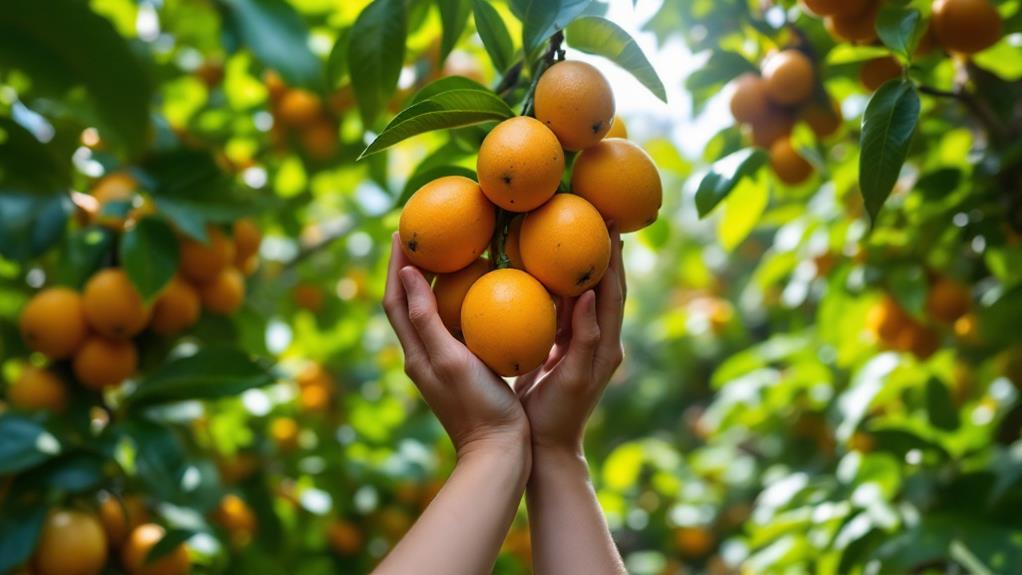
As your langsat trees flourish, the excitement of harvesting their fruit draws near. Langsat fruits typically mature 4-6 months after flowering, signaling it's time to keep a watchful eye on their color and texture. You'll know they're ready for harvest when they turn a golden yellow and feel slightly soft to the touch. This guarantees you get the best flavor and texture from your fruits.
When you're harvesting langsat fruit, keep in mind that each mature tree is capable of producing hundreds of fruits in a season, depending on the care and growing conditions. To maintain the health of your trees and the quality of the fruit, carefully pluck the langsat from the clusters. Avoid damaging the tree and surrounding fruits to preserve the longevity and productivity of your langsat grove.
Once you've successfully harvested your langsat, they can be stored at room temperature for a few days. If you want to extend their freshness, refrigerate them. This simple step can help you enjoy the fruits of your labor longer. With these tips in mind, you'll be well-equipped to make the most of your langsat harvest, savoring the sweet rewards of your hard work.
Cultural Importance
Why does langsat hold such a cherished place in Southeast Asian cultures? It's because langsat is more than just a fruit; it's a symbol of prosperity and abundance. During harvest festivals, you'll find langsat celebrated as a token of good fortune. Its cultural importance is evident as it graces traditional dishes and local cuisines, adding a unique flavor to culinary practices.
Langsat's role extends beyond the dining table. In many communities, offering langsat to guests signifies hospitality and generosity. When you serve this fruit, you're not just sharing food; you're extending a warm welcome, embodying the spirit of Southeast Asian hospitality.
Moreover, langsat is deeply rooted in traditional medicine. Its leaves and fruits are known for their healing properties, used to treat different ailments. This highlights its cultural significance as a resource for health and wellness, not just nourishment.
Langsat trees also symbolize a connection to nature and sustainable living. They reflect Southeast Asia's rich agricultural heritage, reminding you of the importance of maintaining a harmonious balance with the environment. Through langsat, you'll see how a simple fruit can embody profound cultural values and traditions.
Common Growth Challenges
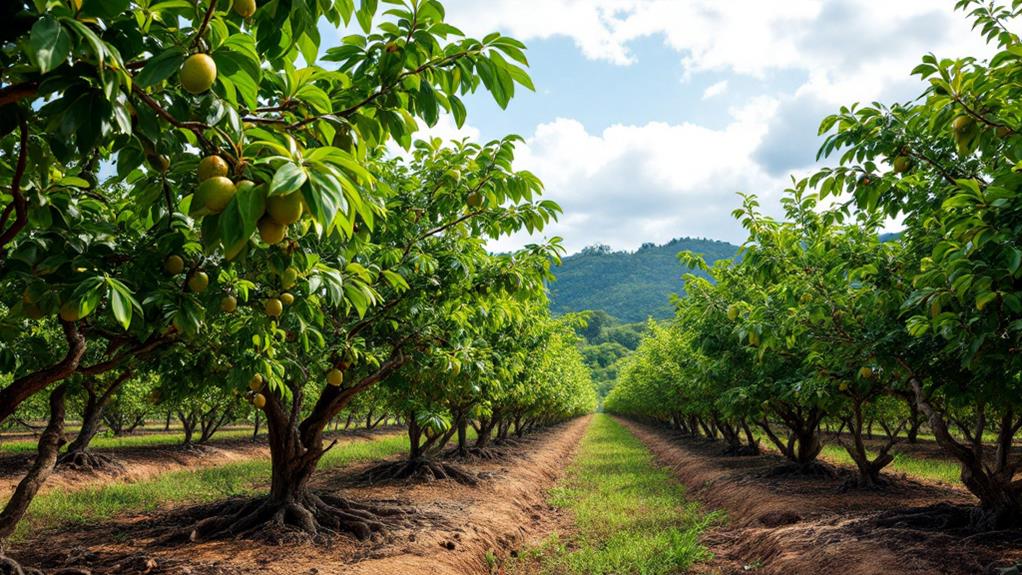
Growing langsat can often present unique challenges that require careful attention and management. One major issue you'll face is dealing with pests like aphids and fruit flies. These tiny creatures can wreak havoc on your fruit yield and quality. Regular monitoring and control measures are vital to keep them at bay. Disease prevention is imperative, and pruning plays a noteworthy role in this. By promoting air circulation through careful pruning, you can reduce the risk of diseases such as anthracnose and root rot, which can heavily impact tree health and fruit production.
Seed germination is another hurdle. Langsat seeds have unpredictable success rates, with some taking weeks to sprout, and not all seeds will germinate. Guarantee you select healthy fruit for seed extraction and follow proper storage methods to optimize your chances. Environmental factors can also hinder growth. Make certain your langsat trees receive full sun exposure and are planted in well-drained, fertile soil. Poor soil drainage and insufficient sunlight can considerably stunt growth.
Lastly, the limited availability of viable seeds from harvested fruit can restrict propagation. Pay close attention to selecting and managing your seeds to overcome this challenge.

